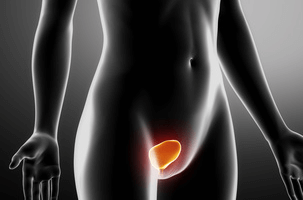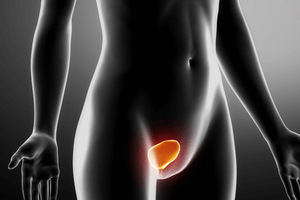
Pelvic organ prolapse is a condition where one of the pelvic organs such as bladder, rectum, uterus, urethra, and small bowel protrude into the vaginal cavity or even bulge out. Several types of prolapse conditions have been identified and they include:
- Cystocele – Bladder protrudes into the vagina
- Rectocele – Rectum protrudes into the vagina
- Vaginal vault prolapse – Top portion of vagina herniates into the vaginal canal
- Uterine prolapse – Uterus prolapse into the vagina
- Enterocele – Small bowel herniates into the vagina
What is the cause for prolapse?
The main cause of prolapse is the weak muscles, tissues, and ligaments that support the vagina, surrounding tissues and organs. The factors that can cause prolapse include:
- Frequent lifting of heavy objects
- Chronic cough
- Severe constipation
- Menopause
- Childbirth
- Previous surgeries in the pelvic area
- Advanced age
- Hysterectomy
- Obesity
What are the symptoms of prolapse?
Women with prolapse may have different symptoms based on the type of prolapse. The signs and symptoms include:
- Difficulty urinating and emptying the bowel
- Urine and faecal incontinence
- The enlarged and wide vaginal opening
- Vaginal lump and the protrusion of tissue at the front and back wall of the vagina.
What are the treatment options for prolapse?
Pelvic floor muscle exercises
can restore muscle strength and fix some degree of prolapse, but for severe prolapse, you will need to use pessary ring or have a surgical restoration.
Pessary ring
is a silicon ring made in different sizes to fit your vagina. It is inserted by the Gynaecologist and changed every 4-6 months. İt’s aim is to mechanicaly lift the prolapsed vaginal organs. You can be sexualy active with the ring and use tampons for your period.
If you are postmenopausal you will probably need to use local vaginal oestrogen crean to lubricate your vaginal walls and avoid vaginal injury from chronic friction by the ring.
Surgery
Surgery is done to restore vagina and the pelvic organs back to their respective positions and provide symptomatic relief. It helps to strengthen the muscles around the vagina and prevent further damage of pelvic floor muscles. Vaginal prolapse surgery may be done through laparoscopy or vaginal surgery. Various surgical procedures are performed to correct the prolapse of different pelvic floor organs.
Every surgical procedure may be associated with certain risks and complications. Possible complications include: pain, infection, bleeding, recurrence of symptoms, injury to ureters, perforation of rectum and bladder, new incontinence and voiding difficulties. The complications are usually mild and can be treated accordingly.
FAQs
Can I run with a pelvic organ prolapse?
Pelvic organ prolapse can limit your physical activity if the prolapse is significant. Running will not worsen the prolapse probably but weight lifting for example will. If the prolapse is limiting your daily activity and affecting your quality of life, that’s the time to get medical advise and treat it.
Can a pelvic organ prolapse be reversed?
Mild pelvic organ prolapse can definitely be reversed by regular pelvic floor muscle training instructed by a specialist physiotherapist. Moderate prolapse can be improved by a physio but probably not reversed, and severe prolapse won’t even be improved. In those cases, surgical correction is usually needed or support by pessary ring.
Can you get pregnant with a pelvic organ prolapse?
Yes, you can get pregnant with a pelvic organ prolapse. Do note, that pregnancy and vaginal delivery will probably worsen the prolapse. It is recommended to postpone surgical treatment for prolapse to after you have finished your family planning. You can still get conservative treatment for the prolapse before during or after the pregnancy.

